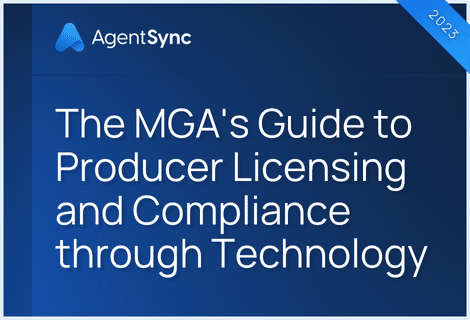

When a business first starts out, it may only have the resources to purchase the most essential technology and software. You have to buy an email application, maybe some cloud storage, and a bookkeeping software.
As business grows, and you increase both the number of clients and employees, you soon start realizing that your current systems aren’t cutting it. Maybe you need an HR management system, a payroll system, a customer relationship management system, a project management system, and more!
As you start to purchase each of these systems, you discover a big problem. None of them talk to one another and now you’ve got different versions of the same information all over the place. Where does the most accurate information live? Whose job is it to update every different system when something changes?
These pain points are the primary problems that integration promises to solve.
In broad terms, integration is the linking of various software, systems, and applications to function together. This connectivity helps companies improve productivity and reduce operational costs, often by reducing or eliminating manual and duplicative processes. System integration benefits businesses themselves internally, external customers, and third-party business partners.

Three types of software integration
There are several different types of integration, each of which results in the connection of business information and data between software. Three of the most common types of technological integration are API, built-in, and middleman.
What are API integrations?
The most common integration type is the Application Programming Interface, or API. API acts as a publicly available interface that connects two or more softwares. API integration is flexible and widely available, making it a popular integration option. One well known example of API integration is the online travel company Tripadvisor which uses API to aggregate data from multiple different hotels and airlines. Instead of having to search multiple hotel brands and airlines for the best price, the consumer can now visit one place and view the results of a large number of searches through the magic of API integration.
What are built-in integrations?
Imagine what would happen if a company built its tool on top of a pre-existing solution? That’s exactly what we’ve done at AgentSync when we built our new application on Salesforce. Many applications are doing this, whether with Salesforce or other foundational solutions, because this method provides ready-made, native, integration abilities – with the underlying solution and other tools built on it.
Because AgentSync is built on Salesforce, it works with other tools found on the Salesforce app exchange. One of the biggest advantages is that AgentSync customers don’t need to be Salesforce customers to use AgentSync, but they’ll still benefit from Salesforce’s technology. In this way, built-in integration equips users with the tech tools they need combined with the benefits of the pre-existing solution those tools are built on.
What are middleman integrations?
Some tools require a “middleman” to allow different apps to communicate with each other. In our everyday lives, we often allow Google or Facebook to act as that middleman, so that different apps can share information and we don’t have to create multiple accounts.
In more highly-technical use cases, connectors like Zapier serve as the bridge between hundreds of thousands of different apps. Zapier, and other tools like it, can help connect and share information between programs that once stood alone. This integration means it’s extremely easy to create automated workflows that used to require a person to receive inputs from one software and then manually create new inputs into another.
What are some advantages of software integration?
The advantages of integration are too plentiful to name in just one blog. However, for starters, integration between systems will improve the accuracy of your data, allow for better collaboration (and in real-time), and save individuals time and effort by allowing distributed inputs.
When softwares allow integrations, they can provide their customers with increased productivity, reduced costs, and more reliable data, just to name a few advantages. At AgentSync, two of the biggest benefits our customers see are having a single source of truth and distributed data entry.
Single source of truth
Having a single source of truth ensures every employee is basing their decisions on the same data. It also means those in charge can look at a dashboard and know the view they are seeing is accurate in real-time.
Insurance rules and regulations vary by state and it can be difficult to keep up. Just like a traveler who would have to search each airline and hotel chain individually to find the best price, insurance agency owners, carriers, MGAs/MGUs, and individual producers would have to check their and their agents’ statuses with each state, and do so on a regular basis.
Instead, AgentSync’s integration with NIPR creates a single source of truth that everyone can turn to for a quick look, and be confident they’re seeing data that’s accurate to what each state is currently reporting for each producer or agency.
Distributed data entry
Distributed data entry means that different people are responsible for different inputs, but one system can still display them all. Imagine a company of 1,000 people. If one lonely HR employee is responsible for entering the names, addresses, birthdays, social security numbers, and more, for each employee, mistakes are very likely to happen.
On the other hand, each individual can probably be trusted to enter their own personal information once without making a typo. This is the power of distributed data, which is enabled in large part by integrations.
AgentSync puts this power to good use by placing the responsibility for accurate onboarding information on the individual producer. This method guarantees that the responsibility of accurate data entry and verification for an entire workforce doesn’t fall on just one person. Not only does this help reduce data redundancy but it also results in more timely and reliable data.
What are some disadvantages of software integration?
While the advantages are plentiful, there are still some down sides to allowing integrations. These are some reasons why technology companies and software developers may be opposed to it.
- Proprietary information: Some tech tools have industry-disrupting software, processes, or methods they would rather keep a secret. Integration would risk this information becoming public knowledge and more easily replicable.
- Data security concerns: Integration also opens up a lot of security concerns. As data moves through new gateways between systems, new security vulnerabilities are created. Weak points in the connection between softwares serve as an entry point for hackers.
- A closed source vs. open source mentality: A vast majority of apps and tech tools are closed source, meaning the public does not have access to the source code and therefore cannot make any changes to it. To be integration-friendly, a software does have to give up at least a little bit of its secret sauce, though it doesn’t have to become entirely “open source.” Still, some companies may feel their product is too valuable to allow even the potential for outsiders to influence its inner workings.
While these down sides do exist, there are ways of addressing each concern. More and more softwares are embracing integration and realizing the benefits to customers, industry partners, and their own internal efficiencies.
The truth is, having your different systems “talk” to each other improves data accessibility and employee productivity helping your business save time and money and ultimately run more smoothly.
If you’re in the insurance industry, all the way from a licensed producer to the largest carrier, the integrations found in software like AgentSync can save time, money, and even reduce exposure to compliance violations. Click here to learn how!

